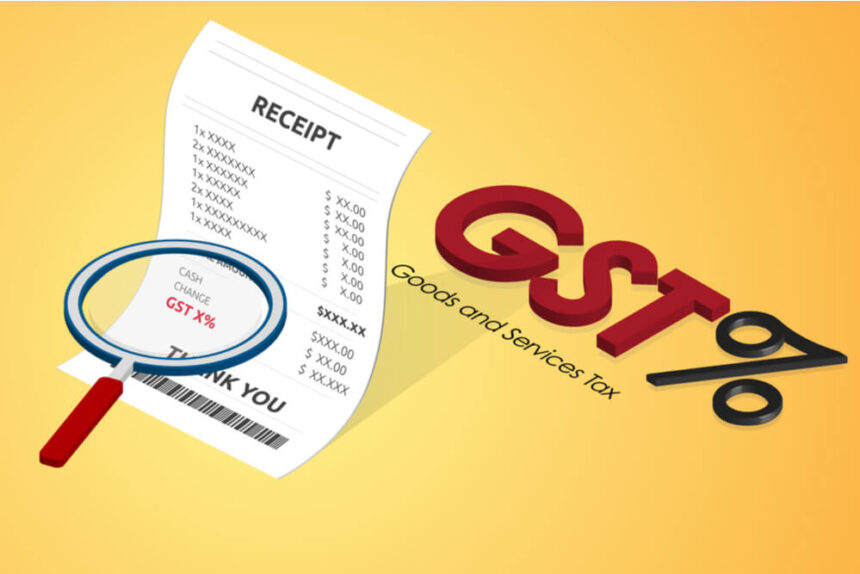Digital payments have become an essential part of India’s growing economy. From shopping online to paying utility bills, the convenience of online transactions has transformed how consumers and businesses engage in commerce. With the government heavily promoting digital payments to drive a cashless economy, these transactions have seen a massive surge in the past few years.
However, a recent proposal by the Goods and Services Tax (GST) Council to impose an 18% GST on payment aggregators for transactions under ₹2,000 has sparked a heated debate. As of now, these transactions are exempt from such taxation, largely to encourage digital transactions during and after demonetization in 2016. With over 80% of India’s digital payments falling under this threshold, the imposition of GST could affect millions of small businesses and consumers who rely on low-value digital transactions.
In this blog, we will delve deep into the proposed tax, its rationale, potential impacts on small businesses, consumers, and the broader economy, and whether it aligns with India’s push towards a digital economy.
The Current Digital Payments Landscape in India
India’s digital payments ecosystem has grown rapidly over the past decade. According to the Reserve Bank of India (RBI), the value of digital transactions exceeded ₹4 trillion in FY2023. This surge can be credited to the increasing penetration of smartphones, affordable data plans, and government initiatives like the Unified Payments Interface (UPI), Bharat Bill Payment System (BBPS), and Digital India.
- Transactions Below ₹2,000: A significant portion of these transactions (over 80%) fall under the ₹2,000 limit. These are small payments made by everyday consumers for services like food delivery, retail shopping, utility payments, and more.
- Role of Payment Aggregators: Payment aggregators like Paytm, Razorpay, CCAvenue, and BillDesk facilitate these transactions by providing merchants with the necessary infrastructure for digital payments. These aggregators charge merchants a transaction fee, typically ranging between 0.5% and 2%, depending on the payment method and the value of the transaction.
Until now, these smaller transactions were exempt from GST, allowing merchants to offer low-cost digital payment options to customers without bearing additional financial burdens.
The 18% GST Proposal: An Overview
In a recent GST Council meeting, the government proposed the imposition of an 18% GST on payment aggregators’ income for transactions under ₹2,000. The GST would be applied retrospectively, starting from the 2017-18 fiscal year, when the GST regime was implemented.
- Historical Context: The exemption on transactions below ₹2,000 was introduced during demonetization to boost digital payments. It was seen as a temporary measure to help the economy transition away from cash.
- Rationale for the Proposal: The government now argues that the exemption has led to significant revenue loss, given the volume of small-value transactions. By levying an 18% GST, the authorities hope to increase their tax revenues and create a level playing field where all digital transactions, regardless of their value, are taxed uniformly.
However, the proposal has garnered criticism from various stakeholders, particularly small businesses, who feel the added costs would stifle their operations.
The Financial Impact on Small Businesses
Small businesses form the backbone of the Indian economy. Contributing around 30% to the GDP and employing nearly 62% of the workforce, they are integral to the country’s growth. For many small businesses, especially those in the retail and service sectors, digital payments account for a significant portion of their revenue.
Increased Transaction Costs for Small Businesses
- Pass-through Costs: If payment aggregators are forced to pay GST on smaller transactions, they are likely to pass these costs on to merchants. For a transaction of ₹1,000, for example, the aggregator might currently charge the merchant a fee of 1% (₹10). With an additional 18% GST on that fee, the total cost would increase to ₹11.80. While this might seem insignificant on a per-transaction basis, for small businesses dealing with thousands of transactions daily, this could add up to a substantial amount.
- Margin Pressure: Many small businesses operate on thin margins. The additional cost imposed by the GST may force them to raise their prices, which could make them less competitive. Alternatively, they may absorb the cost, which could erode their already limited profits.
Implications for Digital Payment Adoption
- Reverting to Cash: One unintended consequence of the GST imposition could be a shift back to cash transactions. Small businesses that once embraced digital payments due to their convenience and lower costs might revert to cash if digital payments become too expensive. This could undermine the government’s broader goals of promoting a cashless economy.
- Loss of Customers: With higher transaction costs, merchants might pass on the additional expenses to consumers, resulting in higher prices for goods and services. Consumers, especially those from lower-income backgrounds, might reduce their online spending, hurting both merchants and the broader digital payments ecosystem.
Consumer Perspective: The Direct and Indirect Burden
Government : Pay 18% GST on online transactions up to Rs 2000
Public : Enjoy your last term Finance Minister Nirmala Sitharaman pic.twitter.com/czVMgzMjjD
— Pushpendra Singh (@pushpendrakum) September 10, 2024Consumers, who have grown accustomed to the convenience and affordability of digital payments, may also feel the pinch of the proposed GST.
Increased Costs for Everyday Transactions
- Higher Prices: If merchants pass the GST cost to consumers, everyday purchases made through digital platforms could become more expensive. For instance, a consumer purchasing groceries online for ₹1,500 might end up paying an extra amount due to the added transaction cost.
- Smaller Transactions Hit Hard: For small-value transactions, the impact might be even more noticeable. A person paying ₹500 for a food delivery might see a significant percentage increase in the overall cost, as payment processors and merchants factor in the GST.
Potential Shift in Consumer Behavior
- Reduced Online Spending: Higher transaction costs could disincentivize consumers from making frequent online purchases, especially for low-value items. In the long term, this could lead to a reduction in online spending, affecting e-commerce platforms, delivery services, and other digital payment-dependent sectors.
- Preference for Cash: Like small businesses, consumers might also revert to using cash for low-value transactions, particularly if digital payment options become more expensive. This could further slow down the progress toward a cashless society.
Industry Opposition and Criticism
Several state governments, industry bodies, and small business associations have voiced strong opposition to the proposed GST on small digital transactions. Delhi’s Finance Minister, Atishi, has been particularly vocal, calling the move “hypocrisy” on the part of the central government.
Key Arguments from Opponents
- Contradictory Policy: Critics argue that while the central government has been promoting digital payments to reduce cash usage, this proposal contradicts that objective by making digital transactions more expensive. They believe that the government should continue to offer tax exemptions on small-value transactions to encourage greater digital adoption.
- Impact on Small Businesses and Employment: As small businesses account for the majority of employment in India, any adverse impact on this sector could lead to job losses. Many argue that the government should focus on providing support to small businesses rather than imposing additional financial burdens.
- Promotion of Cash Transactions: Opponents fear that the added costs will drive both businesses and consumers back to cash-based transactions, thereby reversing years of progress in building a cashless economy.
Industry Response
- Payment Aggregators’ Position: Large payment aggregators like BillDesk, Razorpay, and CCAvenue have already received notices from GST authorities demanding payment of GST on past transactions. Some aggregators have expressed concerns about the retrospective nature of the tax, arguing that they were following government guidelines at the time. This retroactive tax collection could create financial strain for aggregators, who may struggle to pay arrears for several years.
Retrospective Taxation: An Unsettling Development
The proposal :
18% GST on payment gateway charges.
Normally the PA charges are at 1.5-2% for transactions above 2000. The govt. has already implemented GST on this 1.5% PA charges.(Above 2000)
And they want to implement gst on charges on these 1.5% for below 2000. https://t.co/zGKNXJEj3Y
— Bharadwaja chennupati (@CheBharadwaja) September 10, 2024One of the most controversial aspects of the GST proposal is its retrospective application. Payment aggregators and merchants are being asked to pay GST on transactions conducted as far back as FY2017-18. This has created uncertainty and anxiety in the industry, as businesses that did not budget for these additional costs now face potentially large tax liabilities.
Legal and Financial Concerns
- Disruption of Business Operations: For some payment aggregators and merchants, the retroactive tax collection could disrupt their operations. They may need to allocate substantial funds to cover tax arrears, diverting resources away from business growth and development.
- Challenges in Compliance: Businesses that have already filed their GST returns for previous years may face challenges in adjusting their accounts to comply with the new tax regulations. This could lead to increased administrative costs and complexity.
Calls for Clarity
- Industry Demands: Industry stakeholders are calling on the government to provide clear guidelines on how retrospective taxation will be applied. Many are also requesting relief or exemptions for smaller businesses that may struggle to meet these financial demands.
- The Role of the Fitment Committee: The GST fitment committee, tasked with analyzing the potential effects of the tax, will need to consider the impact of retrospective taxation carefully. Its recommendations will play a critical role in determining whether the GST Council moves forward with the proposal.
Global Perspective: How Other Countries Tax Digital Payments
India is not alone in grappling with the taxation of digital payments. Around the world, governments are exploring ways to regulate and tax digital transactions, particularly as cash usage declines.
United States
- In the U.S., digital payment fees and taxes vary by state. Some states impose sales taxes on online purchases, while others have more lenient regulations. However, the taxation of payment processors and aggregators remains a complex issue, with federal and state governments still working to establish uniform policies.
European Union
- The EU has introduced the Digital Services Act, which includes provisions for the taxation of digital platforms and services. While digital payments are subject to value-added tax (VAT), smaller transactions often benefit from reduced tax rates or exemptions.
China
- China’s digital payments ecosystem is one of the most advanced in the world. The government has implemented strict regulations on payment platforms like Alipay and WeChat Pay, ensuring that all transactions are subject to taxation. However, China also offers incentives to promote the adoption of digital payments, particularly in rural areas.
The Road Ahead: Potential Adjustments and Compromises
As the debate over the 18% GST on small digital transactions continues, it is essential for the government to strike a balance between revenue generation and promoting a cashless economy.
Possible Outcomes
- Delayed Implementation: One possible outcome is that the GST Council may delay the implementation of the tax to give businesses more time to adjust. This would provide payment aggregators and small merchants with the opportunity to update their systems and prepare for the added costs.
- Exemptions for Small Merchants: The government may also consider offering exemptions or reduced tax rates for small businesses, ensuring that they are not disproportionately affected by the tax.
- Increased Support for Digital Payments: To offset the impact of the GST, the government could introduce new incentives to promote digital payments, such as subsidies for payment infrastructure or reduced transaction fees for small merchants.
Conclusion

The proposed 18% GST on digital transactions below ₹2,000 has the potential to reshape India’s digital payments landscape. While the government aims to increase revenue, the tax could impose financial burdens on small businesses and consumers, potentially slowing down the progress toward a cashless economy.
As the GST Council continues its deliberations, it is crucial for policymakers to consider the broader implications of the tax and explore solutions that promote both fiscal responsibility and digital adoption. The coming months will be pivotal in determining how this tax is implemented and its long-term impact on India’s digital economy.





